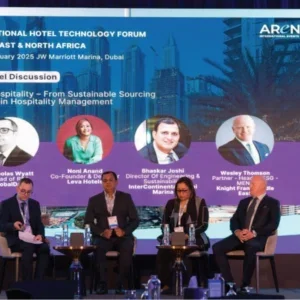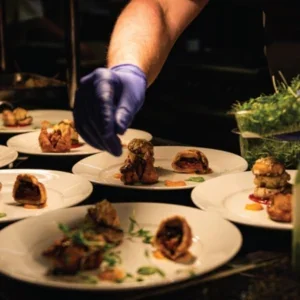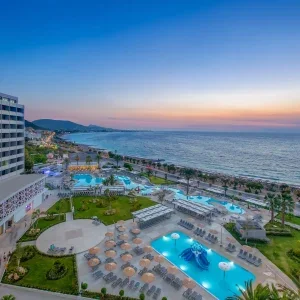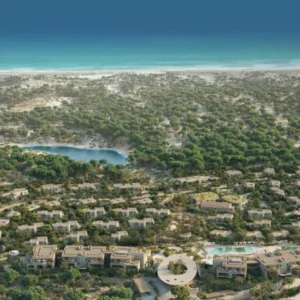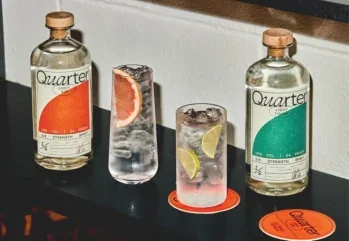
In the 1920s, the US was a booze-soaked place. At least that is the impression one gets from reading F Scott Fitzgerald’s The Great Gatsby. The novel portrays the bacchanalia of the American Jazz Age, a period defined by increased freedom of expression through literature, art, dancing – and, of course, drinking. Though Prohibition laws were meant to curb alcohol consumption during this era, Fitzgerald’s characters seem to have missed the memo. Throughout the book, readers find themselves alongside characters enjoying cold ales on warm summer days, gin rickeys, highballs and champagne served in “glasses bigger than finger bowls”. Gatsby and his friends were not ones to abstain. Fast forward a century and today’s hotel guests might be less interested in recreating the debauchery of the Roaring ’20s. Although the latest data from Eurostat indicates that nearly one in five Europeans still indulge in heavy drinking at least once a month, there is a noticeable shift towards sobriety or, at the very least, moderation.
Market research by Mintel shows that 60% of British adults either did not drink alcohol or had reduced their intake over the past 12 months. This trend is also becoming evident in other parts of the world, with an increase in alcohol-free bar visits and a growing demand for non-alcoholic alternatives at home. Even Fitzgerald himself might have appreciated this shift in drinking culture; as he once wrote in his famous novel, “It is a great advantage not to drink.”
Growing demand for non-alcoholic options in hotels
As the trend towards lower alcohol consumption grows, there is a clear opportunity for hotels to cater to these evolving preferences. With the freeze on alcohol duty lifted in the UK last year, the financial aspect has added another layer to this trend. Rising costs and economic pressures, such as high inflation and real-term wage cuts, are causing many individuals to reconsider their choices when it comes to drinking, both at home and when they are travelling. Additionally, young people are increasingly conscious of the mental and physical impact of alcohol, making non-alcoholic beverages a more attractive option.
Recognising these concerns, some entrepreneurs are already capitalising on this trend. Rohan Radhakrishnan, co-founder of Quarter, a business dedicated to providing lower-proof alternatives to high-ABV spirits, along with his partner Fabian Clark, responded directly to these shifts.
“We saw that people still want a few mid-week drinks with friends and, like myself, might have been conscious of wanting to avoid overconsumption and the follow-on anxiety and physical impact,” Radhakrishnan explains. Quarter’s products reflect a desire to enjoy social drinking without the negative side effects, a demand that is also becoming evident in the hotel sector.
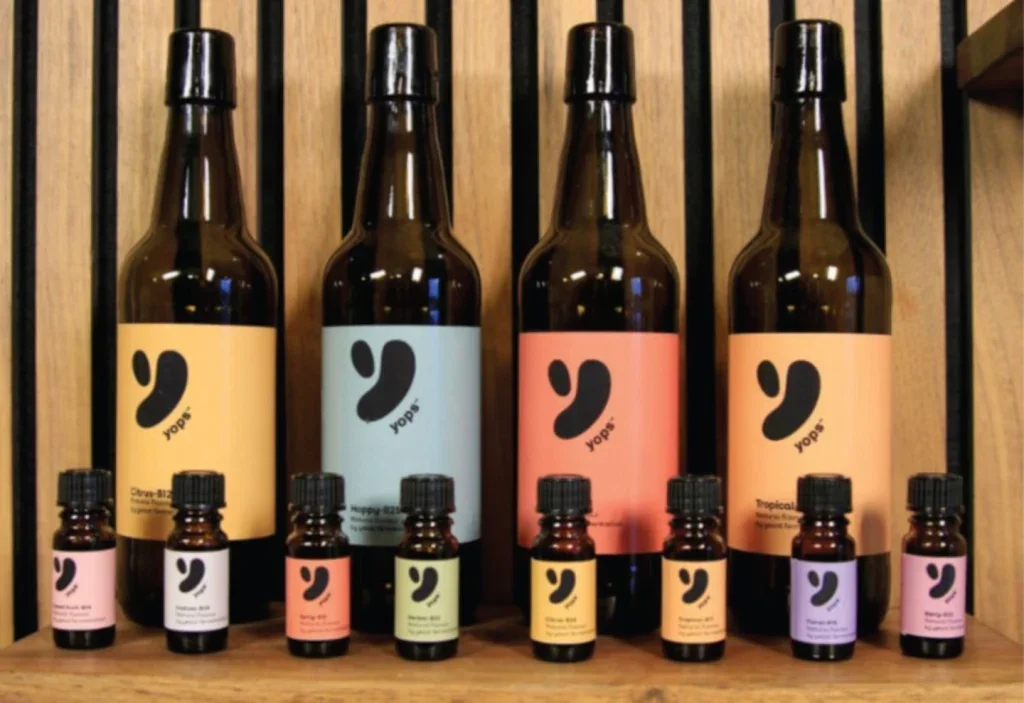
For hotels, offering a variety of non-alcoholic drinks represents an opportunity to appeal to a broader and more diverse audience. The growth of the ‘no and low’ alcohol market reflects this shift. According to IWSR, this market saw almost doublefigure sales growth in 2022, while supermarket Tesco reported that demand for alternative drinks surged by 40% over two years. As a senior beverages buyer from Tesco mentioned on the company’s website, drinkers are increasingly “prepared to buy no and low-alcohol beers as long as the quality is good”.
Overcoming the challenges of flavour and perception
However, hotels that wish to embrace this trend must also navigate the challenges that come with it. The biggest obstacle remains the perception of taste. Analysis by The Grocer found that low or no-alcohol drinks are often ignored by consumers due to a belief that they lack flavour or authenticity.
For instance, a 2019 survey conducted by Statista among South Korean beer drinkers revealed that the belief that alcohol-free alternatives would not have the right flavour profile was the most significant barrier to choosing them over traditional options. Research conducted in Italy found similar results, highlighting that consumers often perceive nonalcoholic drinks as subpar imitations.
Radhakrishnan acknowledges these challenges, stating, “Some non-alcoholic products can be underwhelming, while others try to replicate the mouthfeel, experience and flavours through the integration of sugar. Oils in the [alcohol-free] distilling process can come off, so the booze can be cloudier too.” For hotels, this underscores the importance of carefully selecting high-quality non-alcoholic options to ensure they meet guest expectations in both taste and appearance.
Innovation in non-alcoholic beverages: what hotels should know
To overcome these challenges, producers are focusing on innovation. Many brands are experimenting with new techniques to create satisfying non-alcoholic drinks that meet consumer expectations. AF Drinks, part of Pernod Ricard’s innovation portfolio, offers alcohol-free versions of classic cocktails like G&Ts, Rosé and Cuba Libre. The secret lies in their trademarked botanical, which replicates the warmth typically provided by alcohol – though the exact ingredient remains a mystery.
Other companies are more transparent about their methods. Japanese brewing giant Asahi, for instance, promises that its alcohol-free version of the bestselling Asahi Super Dry beer retains the ‘superpremium’ taste of its alcoholic counterpart. They achieve this through a process called de-alcoholisation, where the beer is brewed in the usual way – using water, yeast, malt and hops – but the ethanol is removed by boiling or vacuum distillation.
However, these methods are not without their downsides. As Professor Sotirios Kampranis, a University of Copenhagen researcher and founder of the biotechnology firm EvodiaBio, points out, “This process is a tremendous problem for the brewers. Even when you attempt to put the aromas from hops back in because there is no ethanol, the aroma struggles to come out, so brewers put more and more in, which becomes extremely costly.”
Kampranis believes that yeast could be the answer to these flavour, cost and sustainability challenges. His company’s signature product, Yops, is an augmented baker’s yeast that, through a fermentation process, secretes aromas that can be captured and then inserted into the brewing process at different stages, enhancing the desired tasting notes.
“With such flavouring technologies,” Kampranis emphasises, “you decrease the environmental impact.” Given that traditional methods of flavouring beer, both alcoholic and non-alcoholic, are extremely waterintensive, use significant land resources, and often involve heavy air-mile consumption, these innovations could offer a more sustainable solution for hotels looking to offer guests something new and environmentally friendly.
Curating the right experience for guests
For hotels, understanding these developments in the non-alcoholic market can be key to curating the right experience for guests. Successfully offering nonalcoholic drinks is not just about having them on the menu – it’s about providing options that taste great, look appealing, and align with the hotel’s brand values. As Radhakrishnan emphasises, “We’re not trying to cheat people into thinking our drink is the same experience as a full-strength product. They will know on mouthfeel – but we do want to deliver the right flavour and a tipsy feeling.”
Radhakrishnan’s company, Quarter, focuses on crafting low-alcohol alternatives that still offer complexity and depth of flavour, even when diluted as part of a cocktail or mixed drink. His team spent eight months breaking down traditionally enjoyed spirits into discrete ingredients and flavours and then tested how these flavours performed at higher dilutions. The goal was to ensure they could achieve the right balance in their newly reformed low-booze products. “Light doesn’t have to mean less flavour,” he insists. “Even in traditional cocktails, with low alcohol alternatives, you can get the recognisable sweet bitterness of a Negroni.”
The future of non-alcoholic beverages in hotels
Looking ahead, the future of non-alcoholic beverages in hotels will depend heavily on transparency and truthful marketing. “It’s fairly simple,” Radhakrishnan says. “It’s a gin and tonic or a Negroni – just a lighter version.” He believes managing expectations will be crucial for hotels that want to successfully offer these drinks. At the same time, Radhakrishnan is exploring where the drinks market will head next.
Quarter, for its part, is preparing to introduce another low-alcohol alternative, with the firm’s London-based founder suggesting that as replication of full-strength flavour profiles improves, mood enhancers and adaptogens will take centre stage. As Radhakrishnan puts it: “Who knows what will become possible in the next few years?”
Kampranis shares this sense of curiosity about the future of the non-alcoholic beverage market, especially as the effects of climate change become more apparent. He suggests that hop harvests may become less reliable, increasing interest in alternative brewing methods.
“We’re moving towards looking at this [the yeast] solution for non-alcoholic wine, which you can imagine is a big flavour challenge,” he says. “In principle, this technology can do all the flavours and fragrances of beer – and even cosmetics and household products – that currently use chemicals, but we can replace them with natural aromas to make them more sustainable.”
For hotels, embracing these new trends could mean more than just offering a few mocktails; it could involve a rethinking of the beverage experience altogether, with a focus on sustainability, health and innovative flavours. As consumer preferences evolve and the market for non-alcoholic options continues to grow, hotels that stay ahead of these trends will be well-positioned to enhance their guest experience in a fresh, contemporary way. So, whether guests are toasting with a traditional cocktail or a cutting-edge alcohol-free alternative, hotels can ensure they have something for everyone.


